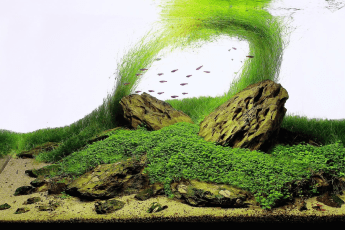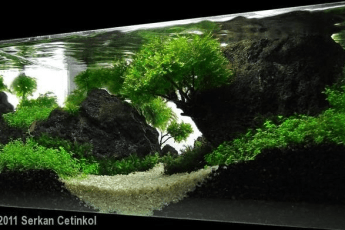Aquascaping, the art of creating visually stunning underwater landscapes, involves a delicate interplay of various elements. Among these elements, color harmony plays a pivotal role in enhancing the overall aesthetics of an aquarium. A well-designed aquascape not only provides a tranquil environment for aquatic life but also captivates observers with its harmonious blend of colors. In this article, we will delve into the significance of color harmony in aquascaping, exploring the principles, techniques, and considerations that contribute to creating visually appealing underwater ecosystems.
Understanding Color Harmony
Color harmony is the balanced and pleasing arrangement of colors within a composition. In aquascaping, achieving color harmony involves selecting and combining aquatic plants, substrate, decorations, and even fish in a way that creates a visually cohesive and appealing display. The primary goal is to evoke a sense of balance, unity, and tranquility that mimics the beauty of natural underwater environments.
Principles of Color Harmony
Complementary Colors: One fundamental principle in aquascaping is the use of complementary colors. Complementary colors are situated opposite each other on the color wheel, such as red and green, or blue and orange. Incorporating these pairs can create a vibrant and visually striking contrast, adding dynamism to the aquascape.
Analogous Colors: Analogous colors are adjacent to each other on the color wheel, such as blue and green. Utilizing analogous colors in an aquascape can result in a more serene and cohesive appearance, mirroring the subtle variations found in nature.
Monochromatic Schemes: A monochromatic color scheme involves using different shades and tones of a single color. This approach imparts a sense of simplicity and elegance to the aquascape, allowing for a visually soothing experience.
Triadic and Tetradic Schemes: Triadic and tetradic color schemes involve selecting colors that are evenly spaced around the color wheel. While triadic schemes create a sense of balance, tetradic schemes offer more diversity and complexity, adding visual interest to the aquascape.
Techniques for Achieving Color Harmony
Consideration of Plant Species: Different aquatic plants exhibit a variety of colors, textures, and growth patterns. Careful selection and placement of plants based on their color characteristics contribute significantly to achieving color harmony. Consider factors such as leaf color, shape, and size when planning the aquascape.
Substrate and Hardscape Elements: The substrate and hardscape elements, such as rocks and driftwood, also play a crucial role in determining the overall color scheme. Earthy tones like browns and greys can create a natural and calming backdrop, while contrasting elements like white sand can add a touch of brightness.
Fish Selection: The colors of fish can either complement or contrast with the overall color scheme of the aquascape. Thoughtful selection of fish species based on their colors and patterns can enhance the visual appeal of the aquarium.
Considerations for Successful Color Harmony
Lighting: Proper lighting is essential to bring out the true colors of the aquascape. The intensity and spectrum of light can influence the perception of colors, so selecting the right lighting for the specific needs of the plants and the overall aesthetic is crucial.
Maintenance and Growth: Regular maintenance, including pruning and trimming of plants, is necessary to ensure that the aquascape maintains its intended color harmony. Additionally, monitoring the growth patterns of plants helps prevent overcrowding and maintains the balance of colors over time.
Conclusion
In the world of aquascaping, achieving color harmony is an art form that requires a thoughtful and creative approach. By understanding the principles, employing various techniques, and considering important factors, aquascapers can create captivating underwater landscapes that not only provide a harmonious environment for aquatic life but also serve as visually stunning works of art. Striking the right balance of colors not only enhances the beauty of the aquascape but also fosters a sense of tranquility and connection to nature for both the observer and the inhabitants of the underwater realm.



